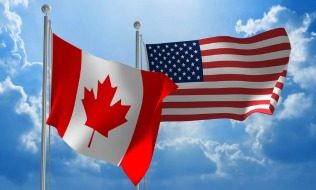

Large pension plans in the United States are increasingly looking to Canadian pension funds for ideas and best practices in institutional investing, according to a new report by market researcher Cerulli Associates.
According to the report, no model for defined benefit plan investments resonates more with U.S., and even global, institutions than the so-called Canadian model.
Read: OPTrust executives in Washington to promote Canadian pension model
“Large Canadian DB plans typically exhibit three distinct characteristics: an emphasis on cost savings, a well-diversified investment portfolio and a large appetite for illiquid alternative investments,” said Chris Mason, a senior analyst at Cerulli Associates, in a press release. “As with institutions around the world, U.S. pension plans, particularly public plans, are taking a few pages where they can from the Canadian model.
“U.S. public and corporate plans have very distinct differences that show up in how they invest assets. Therefore, each type of plan is taking different ideas and best practices from an investment standpoint. Nevertheless, there are different best practices to be learned from Canadian plans, which today are considered some of the most sophisticated institutional investors in the world.”
The report also says Canadian plan sponsors view their in-house teams as valued investment professionals and compensate them accordingly, which reduces the reliance on outside managers, while U.S. plan sponsors are leaner and, therefore, more commonly reliant on third-party managers and consultants.
Read: Do Canadian pension fund managers earn too much?
In exploring Canadian pension funds’ influences on their U.S. counterparts, Cerulli Associates also compares the two countries’ defined benefit markets. “Among the most notable differences between the two markets is the variation in both the assets under management and the number of plans,” the report noted.
According to Cerulli Associates, U.S. private and public defined benefit plans held approximately $6 trillion in assets as of 2015. In comparison, the approximately 9,800 registered defined benefit plans in Canada had assets of $1.02 trillion over the same time period.
Read: Pension heads discuss the lessons from Canada’s public plans
In addition, the top 10 Canadian defined benefit pension plans accounted for 45 per cent of the entire market as of 2015, the report pointed out. In the United States, the concentration among the top 10 plans was only 22 per cent.
Ultimately, according to the report, while many U.S. pension funds may express interest in adopting elements of the Canadian pension model, that’s only possible for very large investors with the necessary size, scale and internal resources. But the report also concedes that applies to Canada as well. “It is also important to note that the Canadian model does not apply for all Canadian DB plans; given the nature and defining characteristics of the model, a plan must be of sufficient size to capitalize on cost efficiencies and investment opportunities related to scale,” the report stated.
Read: Sounding Board: DB plans key to stability, economic activity
